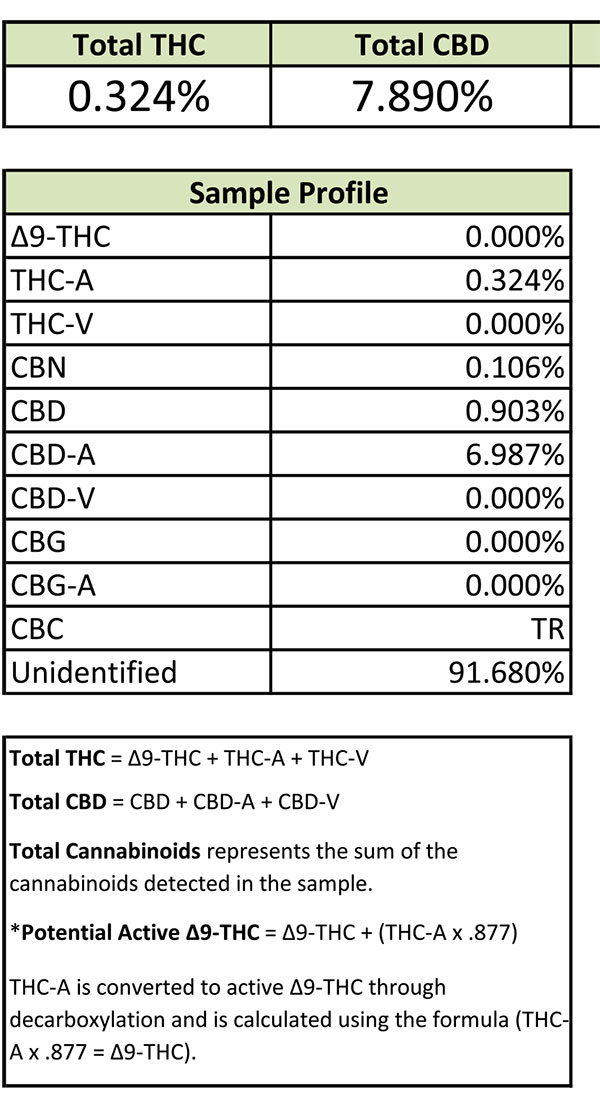THCa vs. delta-9-THC
in a Nutshell
When we say THC, we are referring to delta-9-tetrahydrocannabinol / Δ-9-tetrahydrocannabinol / Δ-9-THC. This is the psychoactive component in cannabis that creates the ‘high’. Δ-9-THC has other effects on the body (like shrinking tumors) but we won’t get into that here.
THCa is not psychoactive and will not get you high. However, when heated (decarboxylated) THCa converts to Δ-9-THC, by losing the carboxylic acid.
There is an easy formula to determine how much THC will be produced when the THCa is decarboxylated.
THCa x .877 = THC
To determine total potential THC in your product, you add all the THC cannabinoids up:
THC + THCv + (THCa x .877) = Total THC
Why do we need to understand this?
What makes hemp ‘hemp’ and not ‘marijuana’ is the THC level being below 0.3%. This is an important number to remember. There is a grey area in the numbers following the ‘3’. Can our crop be 0.39% total THC and still be legal? Good question.
Some legislation is unclear whether it is referring to “current THC” or “potential THC”.
So these are things to ask your states program and get specifics.
Federal Government – USDA
Industrial hemp cannot have a THC concentration more than 0.3 percent on a dry weight basis. The term “THC” includes all isomers, acids, salts, and salts of isomers of tetrahydrocannabinols. – https://nifa.usda.gov/industrial-hemp
Colorado State
Industrial hemp means a plant of the genus Cannabis and any part of the plant, whether growing or not, containing a delta-9 tetrahydrocannabinol (THC) concentration of no more than three-tenths of one percent (0.3%) on a dry weight basis. – https://www.colorado.gov/pacific/agplants/industrial-hemp
However, when I called and asked, I was told they do include the THCa when assessing if you’ve gone over the legal limit.
Below is a sample section of a COA.


